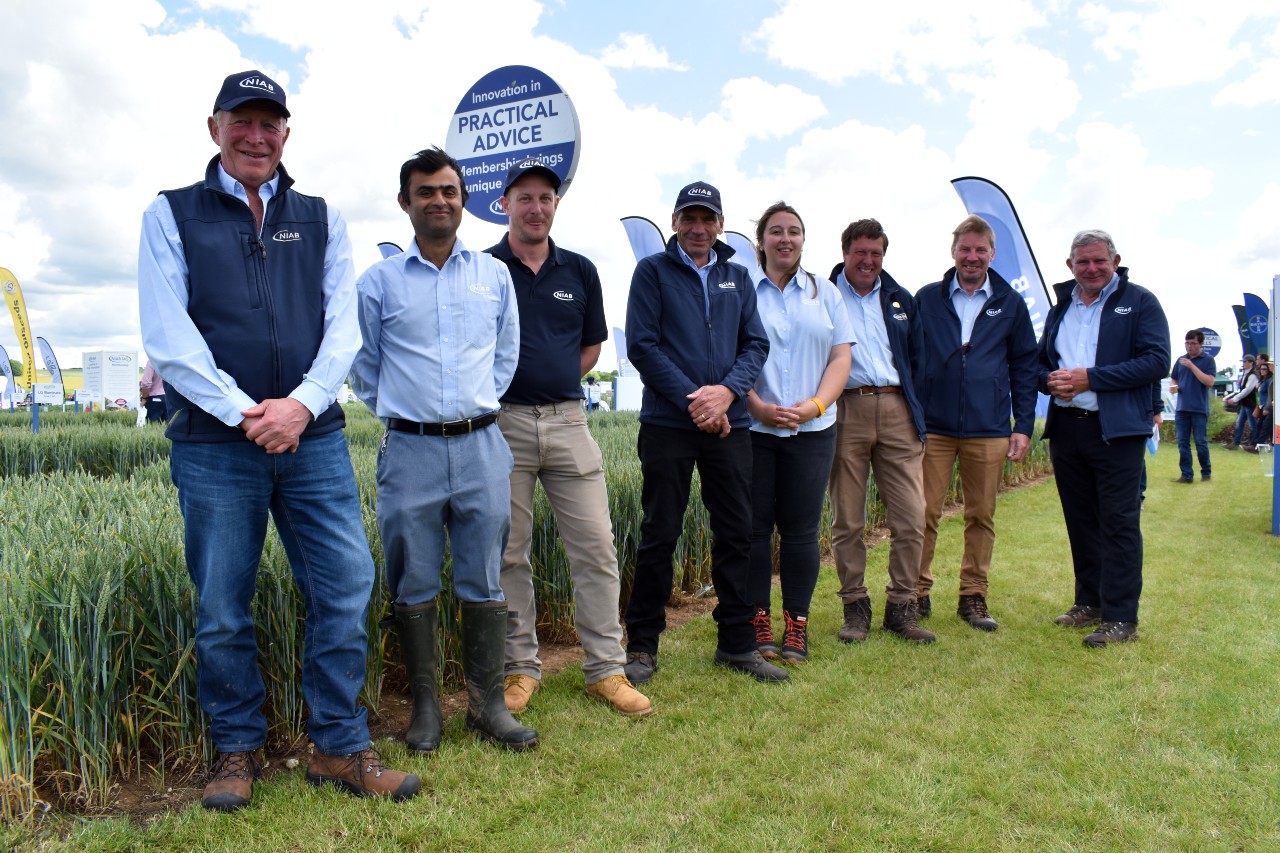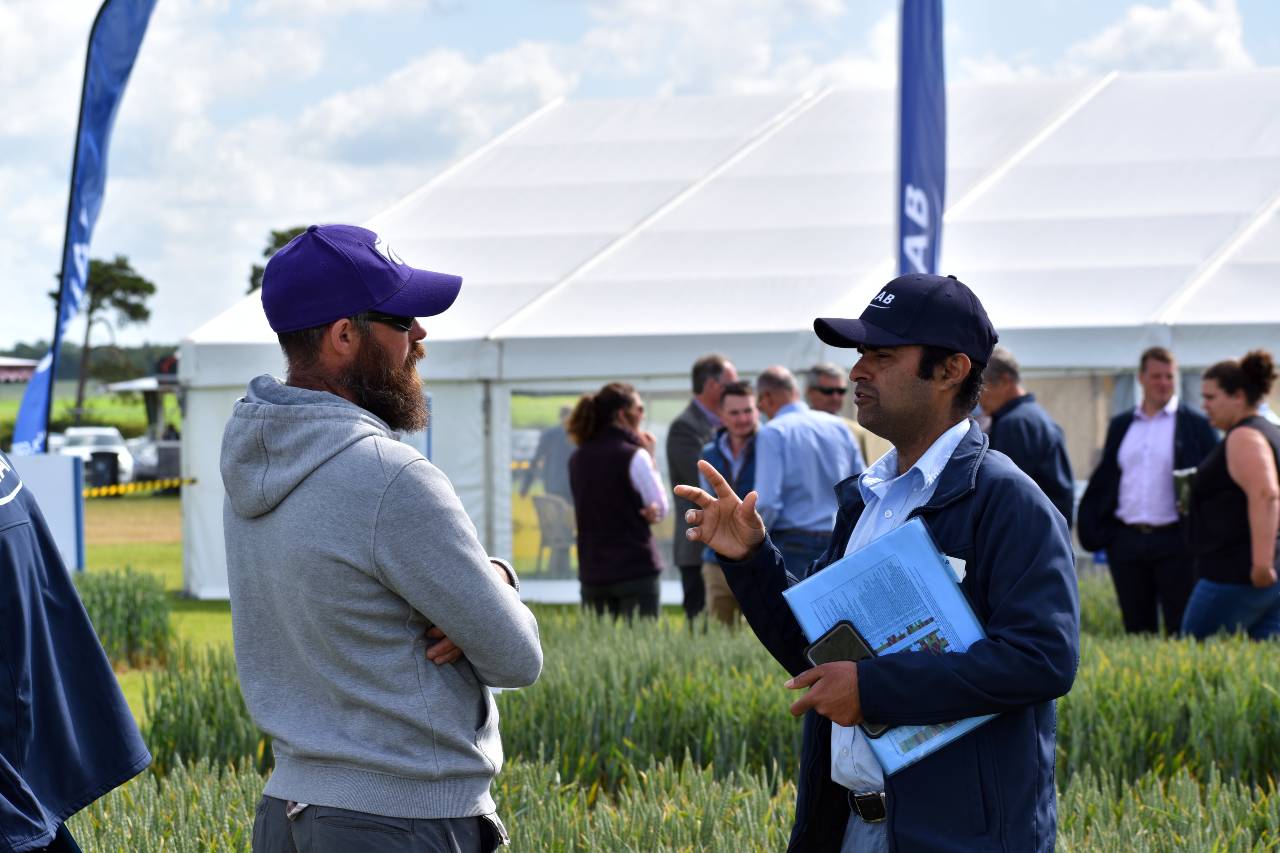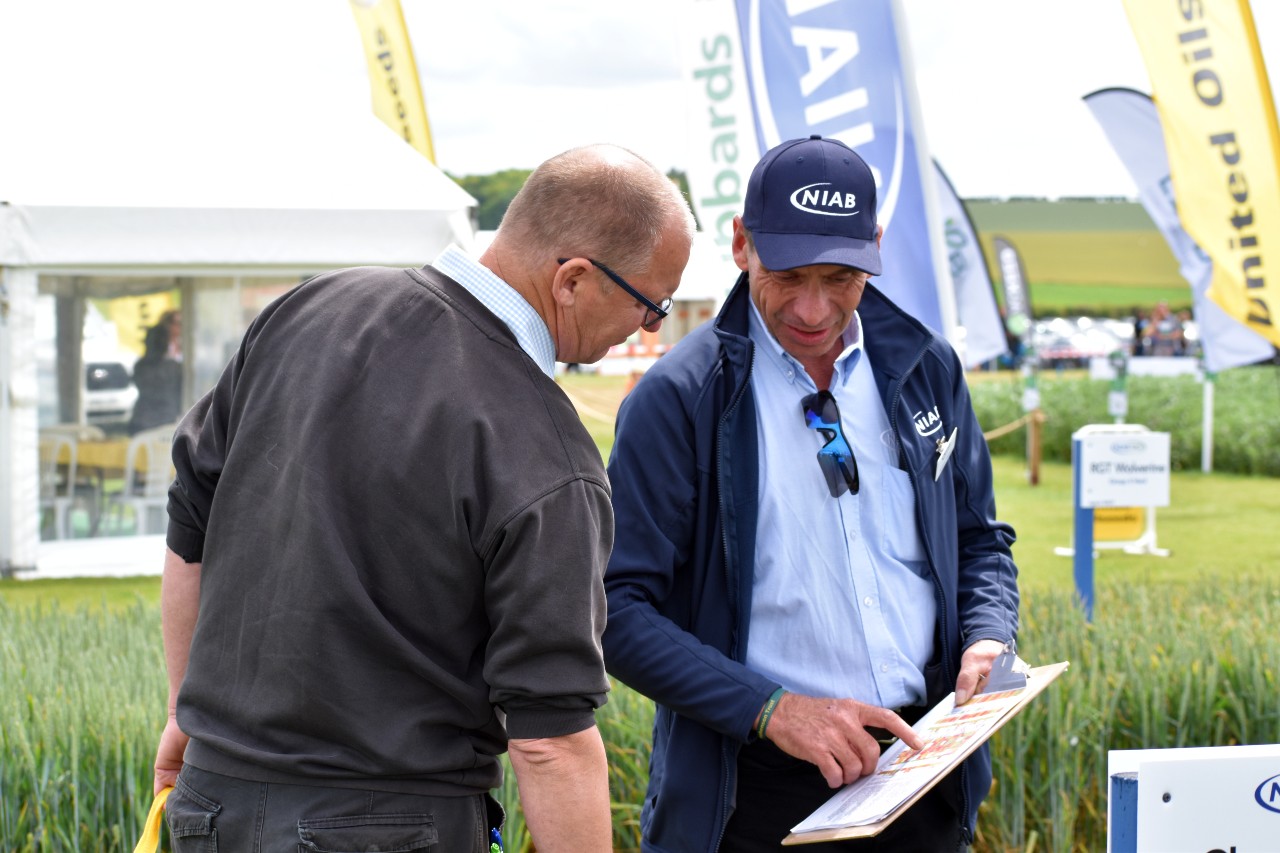- About
-
Research
- Agronomy and farming systems
-
Agricultural crop research
-
Research projects - agriculture
- About SASSA-SAI
- BioBoost
- Biomass Connect
- CTP for Sustainable Agricultural Innovation
- Climate Ready Beans - workshop presentations (March 2022)
- Crop diversity HPC cluster
- Designing Future Wheat
- Final project workshop
- Get involved
- List of materials
- News and updates
- Partners
- Rustwatch
- The Sentinel Crop Disease Surveillance Network
- The research team
- UK Cereal Pathogen Virulence Survey
- UK wheat varieties pedigree
- Weed management - IWM Praise
- Crop breeding
- Crop characterisation
- Data sciences
- Genetics and pre-breeding
- Plant biotechnology
- Plant pathology and entomology
- Resources
-
Research projects - agriculture
-
Horticultural crop research
-
Research projects - horticulture
- Augmented Berry Vision
- BEESPOKE
- Boosting brassica nutrition in smart growing systems
- CTP for Fruit Crop Research
- Develop user-friendly nutrient demand models
- Egg laying deterrents for spotted wing drosophila
- Enhancing the nutritional quality of tomatoes
- Improving berry harvest forecasts and productivity
- Improving vineyard soil health through groundcover management
- Intelligent growing systems
- Knowledge transfer for sustainable water use
- POME: Precision Orchard Management for Environment
- RASCAL
- STOP-SPOT
- UV-Robot
- Crop science and production systems
- Genetics, genomics and breeding
- Pest and pathogen ecology
- Field vegetables and salad crops
- Plum Demonstration Centre
- The WET Centre
- Viticulture and Oenology
-
Research projects - horticulture
- Crop Science Centre
-
Services
- Analytical Services
- Business Development
- Commercial trial services
- Membership
- Plant breeding
- Plant characterisation
- Seed certification
-
Training
-
Technical agronomy training
- Advanced crop management of bulb onions
- Advanced crop management of vegetable brassicas
- Advanced nutrient management for combinable crops
- Benefits of cover crops in arable systems
- Best practice agronomy for cereals and oilseed rape
- Developing a Successful Strategy for Spring Crops
- Disease Management and Control in Cereal Crops
- Incorporating SFI options into your rotation
- Protected Environment Horticulture – Best Practice
- Techniques for better pest management in combinable crops
- Crop inspector and seed certification
- Licensed seed sampling
-
Technical agronomy training
- News & Views
- Events
-
Knowledge Hub
- Alternative and break crops
-
Crop genetics
- POSTER: Diversity enriched wheat (2025)
- POSTER: Genetics of wheat flag leaf size (2024)
- POSTER: Wheat yield stability (2024)
- Poster: Traits for future cereal crops (2022)
- POSTER: wild wheat fragment lines (2022)
- POSTER: Improving phenotyping in crop research (2022)
- PRESENTATION: Plant breeding for regen ag
- Poster: Designing Future Wheat (2020)
- Crop nutrition
-
Crop protection
- POSTER: Understanding the hierarchy of black-grass control (2025)
- POSTER: Emerging weed threats (2025)
- POSTER: Disease control in barley (2025)
- Poster: Weed seed predation in regen-ag (2024)
- POSTER: Disease control in winter wheat (2025)
- POSTER: Mode of action (2023)
- POSTER: Inter-row cultivation for black-grass control (2022)
- POSTER: UKCPVS winter wheat yellow rust in spring 2025 (2025)
- Poster: Management of Italian ryegrass (2021)
- POSTER: UKCPVS winter wheat rusts - 2024/25 review (2025)
- POSTER: UKCPVS disease monitoring and the benefit to UK growers (2025)
- POSTER: Diagnosing and scoring crop disease using AI (2025)
- POSTER: Finding new sources of Septoria resistance (2024)
- POSTER: Fungicide resistance research (2024)
- POSTER: Detecting air-borne pathogens (2024)
- POSTER: Oilseed rape diseases (2024)
- POSTER: Fungicide resistance research (2024)
- POSTER: Improving chocolate spot resistance (2022)
- Poster: Pathogen diagnostics (2022)
- Fruit
- Regen-ag & sustainability
-
Seed certification
- POSTER: Wheat DUS (2024)
- POSTER: Innovation in variety testing (2024)
- POSTER: AI and molecular markers for soft fruit (2024)
- POSTER: Barley crop identification (2023)
- POSTER: Herbage grass crop identification (2023)
- POSTER: Herbage legume crop identification (2024)
- POSTER: Minor cereal crop inspecting (2023)
- POSTER: Pulse crop identification (2023)
- POSTER: Wheat crop identification (2023)
-
Soils and farming systems
- POSTER: Checking soil health - across space and time (2024)
- POSTER: Checking soil health - step by step (2024)
- POSTERS: Changing soil management practices (2022)
- Poster: Monitoring natural enemies & pollinators (2021)
- POSTER: Soil structure and organic matter (2024)
- POSTER: Novel wheat genotypes for regen-ag (2024)
- Video: New Farming Systems project (2021)
- Video: Saxmundham Experimental Site (2021)
- POSTER: Impact of prolonged rainfall on soil structure (2024)
- POSTER: Soil & agronomic monitoring study (2024)
- POSTER: The impact of rotations & cultivations (2024)
- VIDEO: Great Soils; soil sampling guidelines (2020)
- Poster: Soil invertebrates within arable rotations (2024)
- VIDEO: Soil health assessment (2021)
- POSTER: Saxmundham - modern P management learnings
- POSTER: Saxmundham - 125 years of phosphorus management
- Poster: Soil phosphorus - availability, uptake and management (2025)
- POSTER: Morley long term experiments (2025)
- POSTER: Exploiting novel wheat genotypes for regen-ag (2025)
- Video: Saxmundham Experimental Site (2021)
- Varieties
Responding to emerging challenges in 2021/22 - A review of NIAB agronomy membership services

Andrew Watson, NIAB’s regional agronomist in eastern England and Head of Membership Technical Services, reviews NIAB agronomy membership services over the past year, and looks ahead at what may come in 2023...
Despite remarkable challenges, the 2021/22 season was agronomically average; whilst variable between locations, disease levels in most crops were average or below and harvest yields, although variable with soil type and crop, were average to good.Yes, a dry spring turning into a very dry summer with heat from early July had its effect, especially on lighter land but overall crop performance was remarkably good for the rainfall and earliness of harvest.
The worst affected combinable crop were beans, particularly spring beans which for some were harvested six to eight weeks early with an associated reduction in yield, albeit with some good crops too.
Winter oilseed rape was variable, as usual, but average to better generally. Wheat yields were average or better and some spring barley was exceptional. The effect of the season on later harvested crops such as potatoes, sugar beet and particularly maize may well be more profound.
However, the greatest challenges come from global factors. Energy supply, war and post-covid inflation not only supported crop values but vastly increased the cash requirements to fund fertiliser, fuel, energy, and other inputs.
Farmers had difficult decisions to make in the spring about nitrogen rates – should they stick to traditionally required rates
 and maximise yield and returns in 2022 or reduce nitrogen based on economic models and save some cheaper nitrogen for the 2022/23 season. Generally, it appears to be a 50:50 split between the different strategies and, it could be argued, neither strategy was wrong.
and maximise yield and returns in 2022 or reduce nitrogen based on economic models and save some cheaper nitrogen for the 2022/23 season. Generally, it appears to be a 50:50 split between the different strategies and, it could be argued, neither strategy was wrong.
The membership team at NIAB reacted quickly to the emerging challenges in 2021/22. Last autumn we were the first in the industry to publish detailed trials, economic data and tools for members, based on over 130 trials over 20 years, around the fast-developing nitrogen cost issue to allow decisions to be made. In addition, the regional agronomy team has also met its promise to provide a hybrid member events system, based on in-person and virtual meetings, and will continue to do so as we move into the ongoing challenges of 2022/23.
The membership service in 2022
As a response to the challenges within UK agriculture and agronomy, we are constantly evolving NIAB’s research alongside results delivery and subsequent advice to members. Here we summarise how NIAB has dealt with the key issues and opportunities seen in the past harvest year and how the membership and wider NIAB team has adapted to provide practical, relevant and topical information to members.
New regional staff
Our team of regional agronomists expanded from six to eight over the past 12 months. Gary Rackham joined the team in the east, providing one-to-one advice to members across Norfolk and Suffolk. Gary also became involved with member events and advice, demonstrating across the busy summer events schedule. Will Vaughan-France works mainly in the south-west, providing one-to-one and regional agronomy services to members. He also has a national role around membership promotion and future services.

Nitrogen
The 2021/22 season saw substantial price rises across nitrogen and other fertilisers, partly due to energy prices but also due to supply shortages of certain products.
The regional agronomy (RA) team responded quickly to this changing environment to provide detailed guidance of economic fertiliser use, alternative sources of nitrogen and other nutrients such as sulphur, based on the wealth of trial data available within NIAB.
At the point of writing, it is clear there will be significant supply issues going into 22/23 particularly due to large cuts in production of ammonium nitrate in the UK and across Europe. The RA team will continue to respond as this situation develops to provide timely advice to members.
Members’ survey
NIAB conducted a detailed survey of members in 2022 to gain an improved understanding of how our membership resources are used in on-farm decision-making and how members rank the importance of different topics, including emerging challenges. The results have already fed into our trial plans for 2022/23. The results demonstrated a high level of satisfaction amongst members, but the survey will also guide us in continuously improving the service we offer members.

Field trials
NIAB funds over 100 field trials each year for our membership. In 2021/22, work was conducted in 11 different crop species, including increased work in spring crops and crop nutrition in response to member requests. With the evolving needs of farming businesses, the range of trials has become more diverse. NIAB added a new centre for farming systems work in Hampshire, at Sutton Scotney, to augment similar work in Norfolk and Suffolk. As ever these trials have now been reported to members, and are available via the members website.
Ryegrass survey
In 2021/22, in conjunction with Bayer Crop Science, NIAB commissioned the largest survey of ryegrass resistance ever done in the UK. These results will be reported in detail but the headlines include around 10% of samples showing flufenacet resistance and just over 25% showing resistance to both ALS and ACCase contact herbicides. This indicates significant challenges in controlling this weed but members have been supplied detailed guidance in their publication Agronomy Strategy 2 which has been extensively rewritten and expanded to account for recent research and new product introductions.
Future member services
In conjunction with the investment in new staff resources, the services on offer to members from the regional agronomy team have been expanded to provide one-to-one strategic advice from regional agronomists in addition to the main membership offer. If current members wish to know more about this additional offer, then please speak to your local regional agronomist.
NIAB’s agronomy services provide research and on-farm advice to a large farmer and industry membership base, with a range of packages translating the most recent science and the best practice into on-farm strategies. Not a member? You can try it free for 90 days...
This blog post has been adapted from an article written in September 2022 for NIAB Landmark Magazine. Sign up and you can get the magazine delivered to your door.





